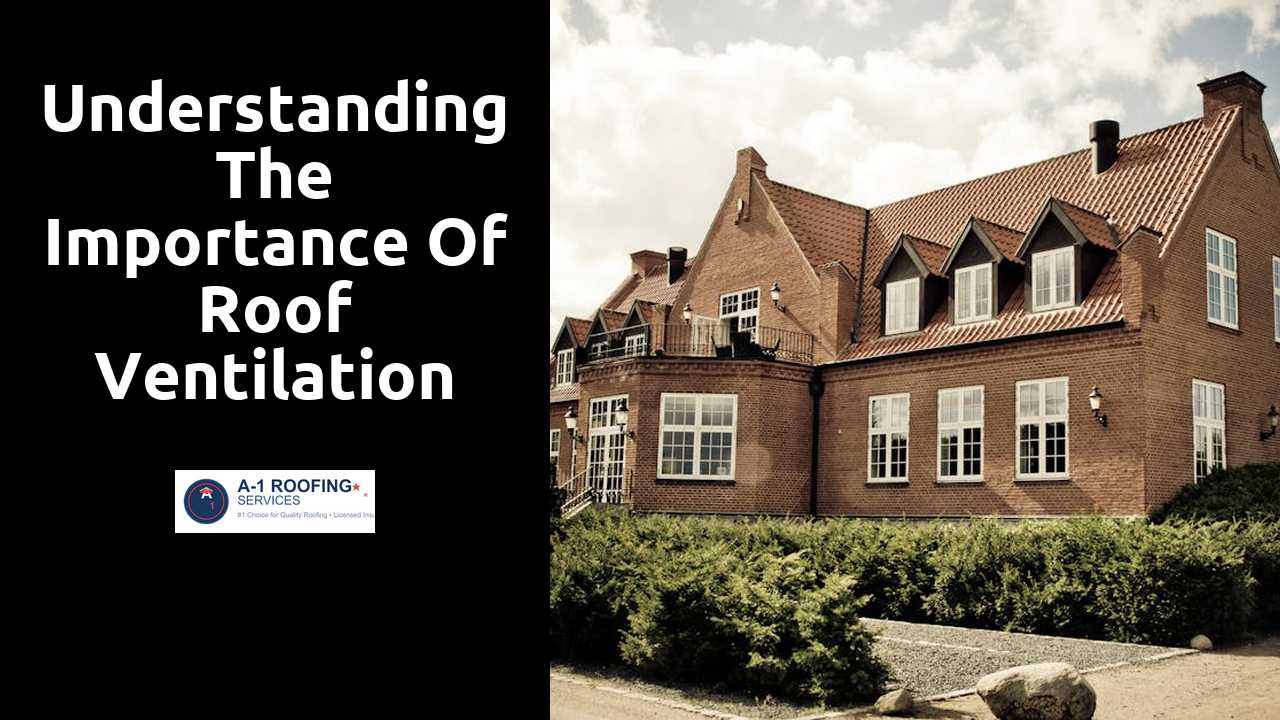
Understanding the Importance of Roof Ventilation in Energy Efficiency
Table Of Contents
How Roof Ventilation Works
Roof ventilation facilitates the flow of air through the attic space, which plays a critical role in maintaining overall home temperature and extending the lifespan of roofing materials. Warm, moist air naturally rises and collects in the attic during warm months. Effective ventilation allows this hot air to escape, creating a cooler, more stable environment that helps reduce the demand on air conditioning systems.
A typical roof ventilation system consists of intake and exhaust vents strategically placed to promote airflow. Intake vents are usually located at the soffits or eaves, allowing cooler air to enter, while exhaust vents are positioned near the ridge or peak of the roof to release the warmer air. This continuous flow of air not only helps regulate temperature but also prevents moisture buildup, which can lead to mold and structural damage over time.
Here is a super informative post that goes into more detail.
The Science Behind Air Circulation
Air circulation within a roof space plays a crucial role in maintaining a comfortable indoor environment. As warm air rises, it can become trapped in attics or roof spaces without proper ventilation. This accumulation of heat increases cooling demands during the summer months and contributes to ice dam formation in winter, leading to potential roof damage over time.
The efficiency of air circulation relies on well-designed intake and exhaust systems. Intake vents allow cooler air to enter the attic, while exhaust vents release the hot air that has accumulated. This natural flow creates a balanced environment that helps manage moisture levels, prevents mold growth, and enhances overall energy efficiency by reducing reliance on heating or cooling systems. Proper airflow not only preserves the integrity of roofing materials but also extends the lifespan of a home’s HVAC systems.
Installation Considerations for Roof Ventilation
When planning to install a roof ventilation system, it is essential to consider the type and layout of the roof. Different roofing styles, such as gable, hip, or flat roofs, may require specific ventilation solutions. Evaluating the size of the attic space also plays a crucial role in determining the right ventilation capacity. Adequate airflow depends on the balance between intake and exhaust vents, so careful calculations are necessary to achieve optimal performance.
Location is another critical factor in the installation process. Ventilation systems should be positioned to maximize air circulation while minimizing the potential for moisture buildup. Avoid placing vents in areas prone to obstructions, such as trees or nearby structures, which could hinder airflow. Additionally, local building codes and regulations may impose restrictions or guidelines to follow during installation, so it is advisable to familiarize yourself with those requirements beforehand.
Key Factors to Evaluate Before Installation
The orientation of your roof plays a crucial role in establishing an effective ventilation system. Understanding how your roof slopes and the prevailing winds in your area can influence the choice of vents. A roof with a steep pitch may benefit from different types of ventilation compared to a low-slope roof. Additionally, the climate you live in is vital for determining the optimal ventilation approach. Hot and humid climates may require more exhaust vents, while cooler areas may prioritize insulation alongside ventilation.
Another important factor is the building’s current insulation levels. Poor insulation can lead to increased energy costs and negate the benefits of ventilation. Evaluating the insulation quality and determining if upgrades are necessary can significantly impact roof performance. It’s essential to ensure that any new ventilation system complements existing insulation rather than compromises it. This strategic approach will help maintain a balanced environment within the attic space and optimize overall energy efficiency.
Maintenance Tips for Roof Ventilation Systems
Regular inspection of roof ventilation systems is essential for maintaining their efficiency. Homeowners should conduct visual assessments at least twice a year, ideally during spring and fall. Look for any visible blockages, such as debris or bird nests, which can obstruct airflow. Furthermore, checking for signs of wear and tear, such as rust or loose components, can help identify potential issues before they escalate.
Scheduled cleaning is also critical for optimal performance. Using a soft brush or vacuum can help remove dust and debris accumulated within vents. In addition, it's beneficial to ensure that the interior parts of the ventilation system are free from moisture build-up, as this can lead to mold growth and further complications. Keeping records of maintenance activities can aid in tracking the condition of the system and planning necessary repairs or replacements.
Ensuring Longevity and Efficiency
Regular maintenance of roof ventilation systems is essential to ensure they function effectively over time. Inspecting vents for blockages caused by debris, leaves, or dust should be part of an annual routine. Cleaning them thoroughly promotes optimal airflow, preventing heat buildup that can lead to energy wastage. Additionally, checking for signs of damage or wear, such as rust or cracks, can help identify issues early, allowing for timely repairs that extend the lifespan of the system.
Incorporating a proactive approach towards roof ventilation maintenance can significantly enhance energy efficiency within a home. Properly functioning vents regulate indoor temperatures, reducing the strain on heating and cooling systems. Homeowners should also consider seasonal adjustments, ensuring that ventilation strategies align with changing weather conditions. This adaptive approach not only preserves the integrity of the roofing system but also contributes to energy savings, creating a more sustainable living environment.
Related Links
How to Choose the Right Ventilation System for Your RoofEvaluating the Costs of Installing Roof Ventilation Systems